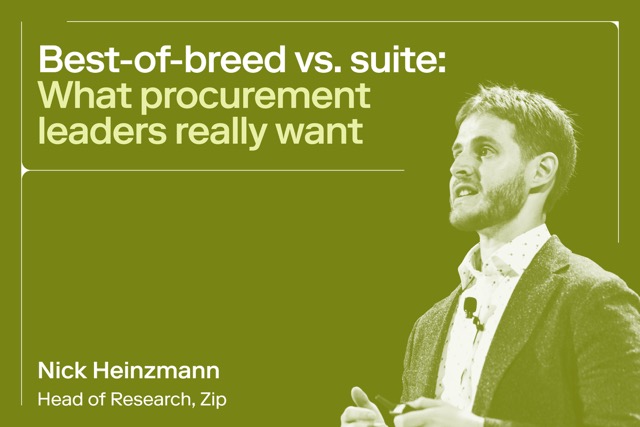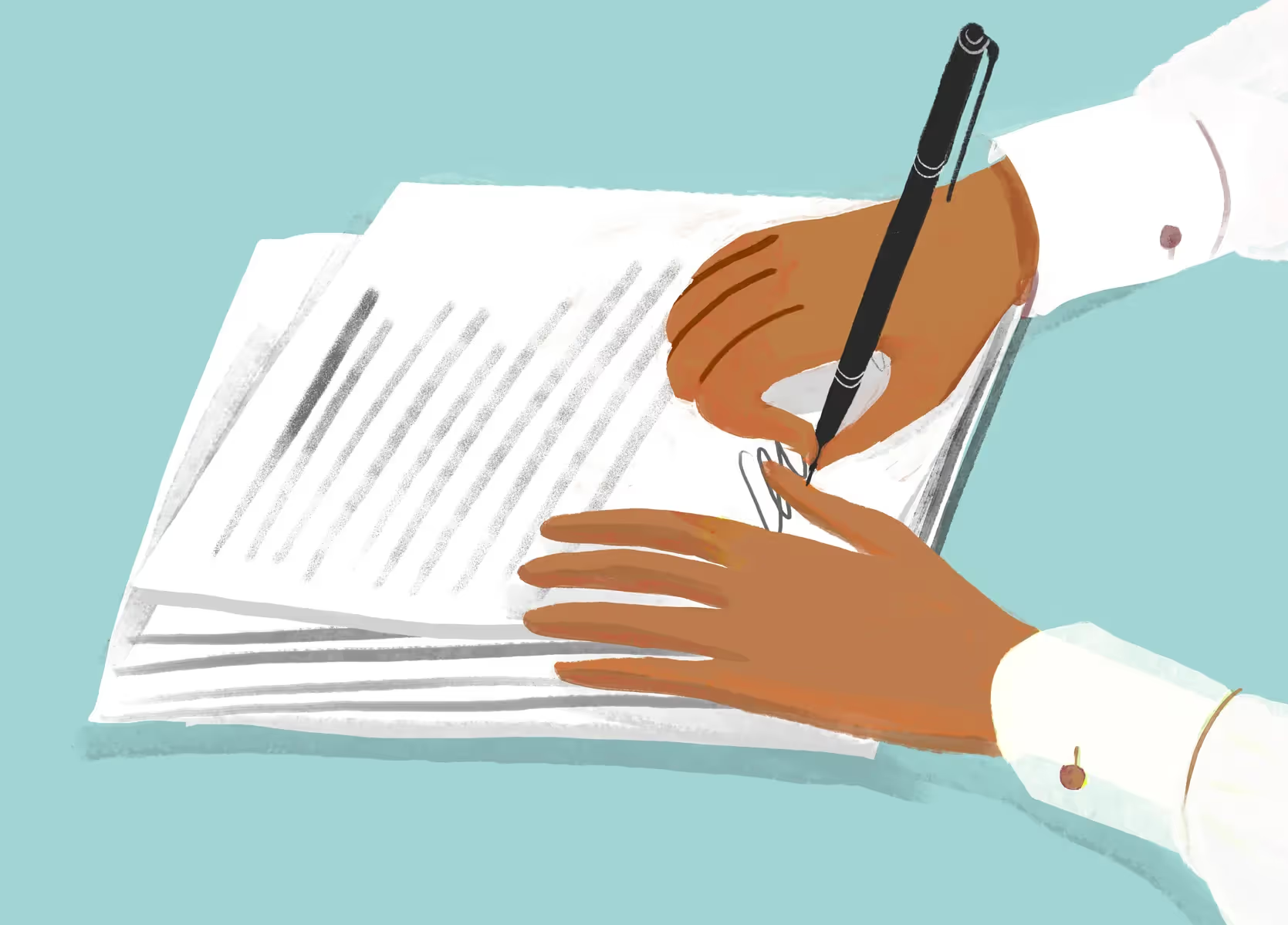
Procurement policies and procedures: The complete guide
Learn key strategies for effective procurement policies that drive results.

How can procurement leaders ensure that their procurement policies and procedures are not just adequate but optimized for operational efficiency, risk management, and sustainability?
Procurement is becoming more of a strategic function within companies, and as such, it’s important for internal policies to be both simple and clear in order to be effective. Strong policies can streamline procurement plans, reduce errors and requests for additional information, and ultimately achieve a more efficient, accurate, and productive operation.
In this guide, we will explore the essential aspects of procurement policies and procedures, providing finance and procurement professionals with the insights needed to enhance control over procurement activities. We’ll also take a look at how Zip can help establish comprehensive procurement orchestration that increases visibility and collaboration across procurement activities.
What are procurement procedures and policies?
Procurement procedures and policies are the backbone of any organization's procurement process. They provide the structure and guidelines necessary for conducting procurement activities efficiently and ethically.
They also allow for more streamlined procurement methods, such as competitive procurement within the selection process, to be more streamlined and clear.
Procurement procedures vs. Procurement policies
Procurement procedures outline the step-by-step processes involved in procurement, from need identification to the creation of a request for information (RFI), request for quotations (RFQ), purchase orders (PO) and beyond.
These procedures ensure operational efficiency by detailing how tasks should be completed. For example, a procedure might detail the solicitation process, including how to issue a request for proposal (RFP) and manage competitive bidding.
On the other hand, procurement policies set the rules and guidelines that govern procurement activities, ensuring compliance and ethical practices. They define the framework within which procurement procedures operate, providing direction and consistency across all procurement activities. Policies address issues such as conflict of interest, code of conduct, and the use of purchasing cards.
How to develop effective procurement procedures and policies
Developing effective procurement procedures and policies requires careful planning and stakeholder engagement. Here are key steps to consider:
- Stakeholder Engagement: Involve key stakeholders from various departments to ensure the policies and procedures align with organizational goals and requirements.
- Compliance: Ensure that the policies comply with relevant laws, regulations, and industry standards.
- Documentation: Clearly document the procedures and policies, making them easily accessible to all relevant parties. Utilize templates to standardize documentation.
- Continuous Improvement: Regularly review and update the procedures and policies to adapt to changing market conditions, technological advancements, and organizational needs.
These recommendations apply to companies of all sizes, from the largest multinational corporations to any small business who manages accounts payable and issues contract awards.
Key components of a procurement procedure
The procurement process is a relatively standard flow for any company who aligns scale and growth with the purchase of goods and services. An effective procurement procedure includes several fundamental steps:
- Requirement Gathering: Identify and document the needs of the organization, considering factors such as the dollar amount and specific requisition details.
- Supplier Evaluation: Assess potential suppliers based on predefined criteria, including their ability to provide the required goods or services. Engage in a competitive process to select the right vendor.
- Contract Management: After proposal evaluation, negotiate and finalize contracts with selected suppliers to ensure compliance with procurement policies. You may want to consider sole source procurements where competitive bidding is not feasible.
- Review and Approval: Ensure all procurement activities are reviewed and approved by the appropriate authorities, including the procurement officer or designee.
Example procurement procedure
A procurement policy might include the following key components:
- Scope: Define the boundaries and applicability of the policy.
- Authority: Specify who has the authority to approve procurement activities, including the procurement officer.
- Ethical Guidelines: Outline the ethical standards that must be adhered to during procurement activities, things like avoiding gratuities and other conflicts of interest.
Procurement vs. Purchasing
While procurement encompasses the entire process of acquiring goods and services, purchasing focuses on the transactional aspect.
Procurement involves strategic functions such as supplier relationship management, strategic sourcing, and value generation, whereas purchasing deals with the actual buying process. The procurement of goods and services often requires detailed planning and coordination, whereas the purchasing process involves the execution of purchase orders and payment processing.
Benefits of an effective procurement policy
Well-defined procurement policies offer several advantages:
- Improved Compliance: Ensures adherence to laws, regulations, and internal guidelines, reducing the risk of non-compliance and associated penalties.
- Enhanced Efficiency: Streamlines procurement processes, reducing time and effort. For example, automated routing and reimbursements can significantly speed up the approval process.
- Stronger Supplier Relationships: Fosters trust and collaboration with suppliers, leading to better terms and conditions and potentially opening up new business opportunities.
How procurement tech and procurement policy shape each other
The relationship between procurement technology and procurement policies is symbiotic. Effective procurement technology supports the adherence to policies by streamlining processes and providing real-time visibility. Conversely, robust procurement policies ensure that technology is used efficiently and ethically.
For example, legacy procurement platforms that do not solve for adoption/intake can lead to employees finding workarounds and circumventing policies.
This is why Zip was built from the ground up as a fully integrated and user-friendly front door for procurement.
Enhance procurement procedures & policies with Zip
Zip offers several features that enable procurement leaders to implement robust procurement policies and procedures:
- Centralized Intake Portal: A single entry point for all purchase requests eliminates manual routing and confusion, ensuring consistent application of policies across the organization.
- Automated Need Validation: Ensures budget compliance, supplier availability, and adherence to procurement policies before requests proceed, reducing manual errors and aligning procurement decisions with organizational goals.
- Flexible Request Forms: Customizable fields and workflows accommodate various purchase types, allowing enforcement of specific procurement policies for different categories of spend.
- Automated Routing and Notifications: Streamlines the approval process with instant notifications, ensuring timely adherence to procurement policies.
- Automatic PO Creation: Generates POs directly from approved requests, speeding up the procurement process and ensuring accuracy and compliance with established policies.
By leveraging these features, organizations can optimize their procurement processes, enhance accuracy and efficiency, and achieve greater control and visibility over their procurement activities.
To learn more, request a demo today and see firsthand how Zip can enhance procurement policy and employee adoption at your company.

Maximize the ROI of your business spend

Enter your business email to keep reading



























.webp)




















.avif)












.avif)










.webp)





.avif)












.avif)
